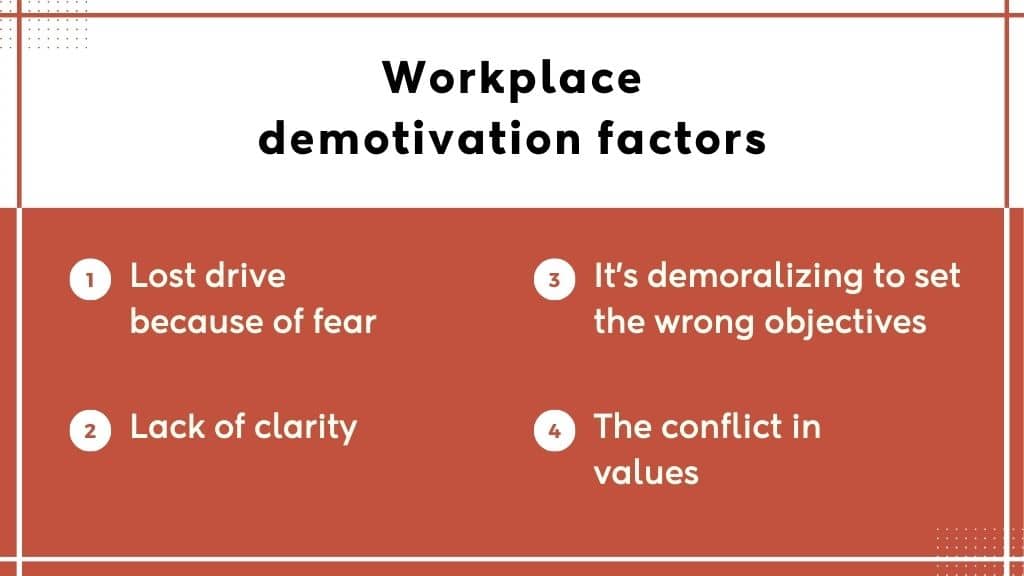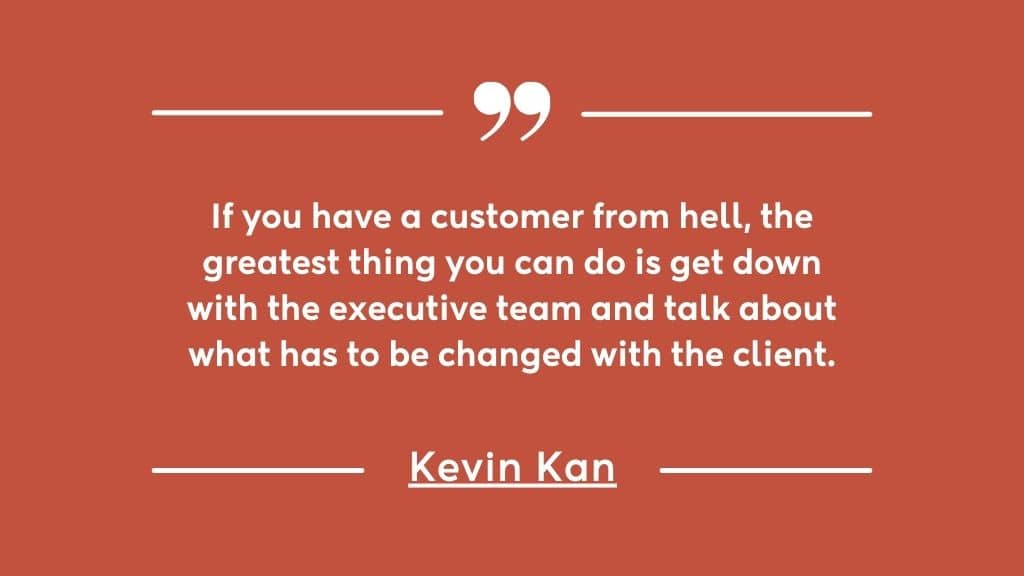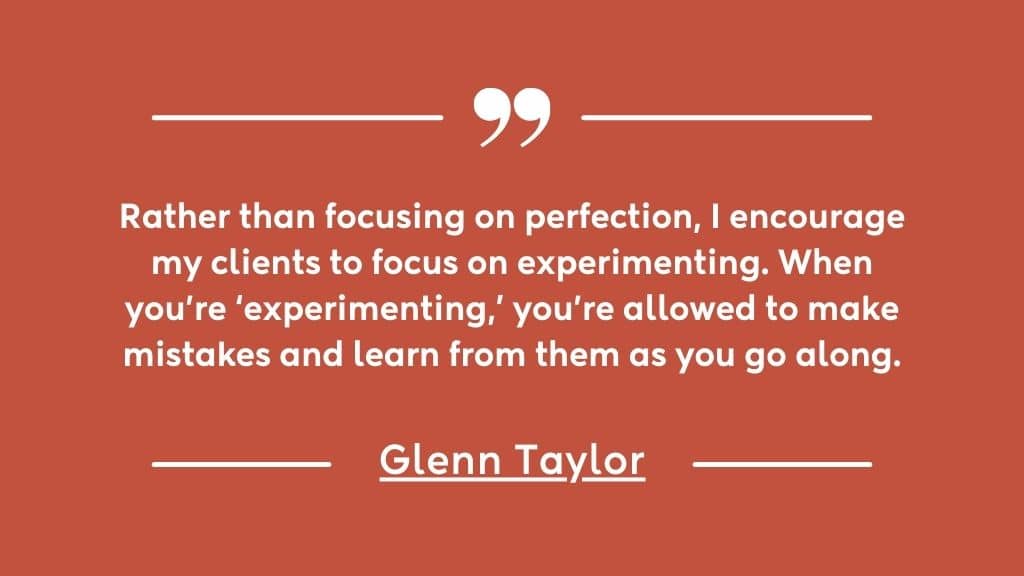Self-discipline can be a challenge.
To put it another way, sustaining your drive through a work, project, or even a career may indeed feel like dragging oneself out of a bog, like the mythical German legend Baron Munchausen.
Every individual have a built-in intolerance to hard work that no caffeine content or motivational pictures can overcome.
Successful self, on the other hand, is a key characteristic that sets high-achieving individuals apart from others. So, how do you keep going when you don’t want to?
Inspiration, to some part, is a matter of personal choice. What motivates you may have no effect on your team-mate.
Furthermore, some people appear to have a higher level of persistence than others. There are a few tactics that appear to work for the vast majority of individuals, regardless of whether they’re attempting to shed pounds, save savings for the future, or execute a long-term project at work.
There is no doubt that many of us have failed at reaching a goal due to laziness or a lack of dedication. You can use these four sets of methods to help you get ahead.
What is the secret of a person’s drive?
1. Extrinsic sources of energy
It is possible to have an extrinsic motivating factor, such as getting the job done or work, as well as an intrinsic motivating factor, such as a desire to lose weight.
Rewards, promotions, and prizes are examples of extrinsic influences. Rather than a trophy, someone might buy a new album to treat himself for adhering to a healthy diet.
One of the problems with extrinsically motivated is that they are prone to creating false expectations. Rather than as compensation for hard work, they tend to demand incentives that are applied consistently as part of the effort itself.
To keep the incentives’ motivational impact, it’s essential to establish criteria that are both fair and rigorous. Extrinsic motivation furthermore fails to achieve relevancy. Incentive motivation’s results can be unpredictable, and it doesn’t always work.
Giving rewards for accomplishing specific occupations would always attract people to those positions and motivate them to deliver to expectations if remuneration worked consistently.
Read more: Hiring The Right Talent: All Aspects Covered
2. Intrinsic motivation
The term “intrinsic motivation” describes the type of encouragement that is both psychological and based on the belief that it occurs when activities are in line with a person’s beliefs or when they like doing something.
It’s possible to tap into this form of incentive in a variety of methods, such as awarding “staff of the month” or distributing a plastic cup with the words “top salespeople.
The relationship between a person’s emotions and wants is critical to figuring out what is known as “internalized motivation.”
Employees tend to place more importance on their supervisor complimenting their work than they do on receiving a reward at the end of the year.
Internal motivation, on the other hand, is a matter of personal preference and, as a result, can be hard to coordinate and put to good use when dealing with diverse groups of people.
3. Introjected motivation
As with internal motivation, ‘introjected motivation’ arises when people feel under pressure to meet in order to obtain the praise of others who hold a position of authority, such as family or employers.
Introjected method and introjected avoidance are two variations on this attribute that are more widespread than most people realize.
There is no control over the individual’s approach and avoidance motivations; therefore, the individual must agree with the criteria to which they must comply.
Motivating yourself to succeed in a work-related endeavor can be beneficial, but it’s not necessarily bad news if there’s some sort of positive outcome.
Read more: Revealed! The Happy Secret to Better Work in 2023
4. Motivating factors
Knowing or experiencing the need to execute or accomplish some job, but not yet executing on this need, is a sort of defined motivation.
In this way, you feel compelled to take action because of your own internal motivation. Often, individuals think that a reward or a penalty is enough to encourage action, but in reality, motivation is a long-term process that takes time to create.
Most folks would easily stop smoking if the risk of lung cancer could motivate them in this way. Because the desire and need to stop smoking take time to manifest, a person may die of lung cancer before gaining the motivation to stop smoking.
This type of motivation is effective since it often results in long-term achievement or performance improvement, but it is generally difficult to wait for becoming motivated.
Workplace demotivation factors

1. Lost drive because of fear
There’s a part of you that is resolute not to move forward while you’re approaching the terrain you’ve chosen. While fear can be a good thing, it can also cause you to overreact and overestimate the dangers that exist in the real world, which can be detrimental.
There are times when even if you’re excited to continue ahead, the part of you still wishes to stay safe is willing to sustain you from venturing into the ground that is both attractive and safe.
It’s time to get pumped up again!
You must overcome your fear in order to get inspired. The first step is to identify your worries and put them out in the open.
Never forget to express gratitude to your anxieties — after all, they’re there to keep you safe.
Once you’ve done that, ask yourself, “Why am I worried that will happen?” “How likely is it that anything like that will occur?” A few of your doubts will vanish right about now.
You have to face your fears if you want to be motivated.
Take a look at the anxieties that remain. So, what exactly are they saying in terms of what you need to do in terms of investigation and risk assessment?
That expertise should be included in your strategy. In the end, if you can calm your concerns by focusing on only the next few little stages, try splitting down the alterations into smaller chunks.
Read more: Top 8 Ways to Fight Imposter Syndrome at Work
2. It’s demoralizing to set the wrong objectives
The motivational approach developed by Martha Beck is outstanding. She said that everyone has two selves: an essential one and a social one.
The part of you that is impulsive, artistic, and playful is your essential self, this is the side of you that recognizes what is really vital to you.
Social self is the piece of you that’s developed since birth, assimilating the customs of the group and ensuring your safety by enforcing “the norms.”
You’re constantly bombarded with messages that appeal to your social self, and you want to make a good impression on the people in our social circles.
Lack of motivation can be traced to a lack of alignment between your social self and your essential self, which is caused by establishing objectives based only on social expectations. It’s your essential self’s method of detaching you from your harmful ambitions by using low morale to slow you down and prevent you from pursuing them.
As you think about each of your goals, pay attention to how your body responds.
It’s time to get pumped up again: Invest some time in re-evaluating your priorities. You may readily access your essential self through your body because it is nonverbal. As you think about each of your goals, pay attention to how your body responds.
It’s a really solid clue if you’re simply following hazardous goals when your body and respiration display symptoms of stiffness and restriction.
Make a list of all the things you’ve decided to do in your life and get rid of them if you get a constrained response. Instead of setting goals that are unrelated to what makes you happy or makes you lose track of time, focus on the things that do.
3. Lack of clarity
Your vision of the future will be hazy if you haven’t explicitly stated what you want. The comfortable is what you like, therefore you oppose and re-create the new and imprecise.
The lack of drive is understandable if you don’t know what you want to develop because you’d prefer to stay in your current situation.
It isn’t enough to know everything you don’t want if you really want to change your life. You need to know what you do want.
You must have a crystal-clear idea of what it is you want, and you must be able to explain that idea in a way that makes it easy for you to take steps in that direction. Take a moment to think about what you want or even why.
4. The conflict in values
What matters most to you in life are your personal ideals. As a result of this, you may be experiencing a values conflict, which is when two or so of your most significant values are at odds with each other.
When you’re trying to discover a way to get what’s essential to you, you could feel torn and tugged in multiple directions. Your urge to work on a particular project may be short-lived, or it may vanish entirely due to the exhaustion of coping with inner strife, which swiftly saps your drive and enthusiasm.
To re-energize yourself, resolve your internal values struggle, and take on the role of mediator. There are pieces of you that advocate for various values, and you need to bring them back together. Begin by recognizing your own internal conflict.
Take out a slip of paper then make a horizontal line down the center. In each column, write down the two directions you feel pushed in, then summarise it with a description of what each component desires.
“Why does this component want that?” is a good place to start. To what end does it aspire by doing so?
The more you ask and answer questions, the more likely it is that you’ll get to the solution that this part of you truly desires. When you arrive at the point where the answers in both columns are the same, you’ve completed the task.
You are made up of many pieces, and each one of those parts has a desire to achieve the same goal. After figuring out what you want, it’s time to look at all of the possible approaches and pick the one that will work best for you.
15 ways to get your workplace back on track
1. Defining your purpose and taking action is essential
The first step is to get clear on what you want to achieve. Many people just lack drive as they don’t know where they’re going, and that’s a problem.
The next step is to begin taking action right away in almost any manner. You may think that you need to be motivated in order to take action, but this is actually not the case.
“Think back to a time when you had to overcome a challenge or fear. You were probably fired up to accomplish more right away.” – Zander Fryer, High Impact Coaching
2. Daily reflection on career achievements is essential
“Take the time each day to reflect on and write down your personal accomplishments. This one habit can help you rediscover your self-confidence in your profession.” – Kyle Elliott, MPA, CHES, CaffeinatedKyle.com
One of the most significant impediments to drive is a lack of self-belief. Boosting your self-esteem can have a significant impact on your motivation.
“Success and self-motivation frequently go hand in hand. As my customers’ careers progress, I’ve noticed an increase in their drive to succeed. When things are bad, it is best to remain positive and focused on your goals.” – Donald Hatter, Donald Hatter Inc.
3. Improve your time management skills and look for ways to add joy
“Time management and delight are both factors in motivational slumps. Spending lots of time is exhausting, to begin with.” – Marita Decker, FutureCourse Education
A task that consumes the whole of your waking time, regardless of how long it takes, will be the same regardless of how long it takes.
It’s like a gradual leak if the work isn’t linked to your personal energizers. However, the answer is not to reduce scope, but to reclaim what you love.
4. Go for a job that makes you feel accomplished
“I see a lack of interest in my customers’ work as among the most common cause of their lack of drive.” – Kaleth Wright, Air Force Aid Society
In most cases, this is due to a mismatch between their employment and their employer’s demands.
You can usually solve this issue by selecting a career that enables you to conduct constructive work and eventually helps you get to be the absolute best of yourself.
5. Pursue your career goals
Throughout Napoleon Hill’s finest work Think and Grow Rich, he argues that desire is the first step to success.
“Clients would be asked how they feel about their present position in the company. When a client is dissatisfied with their present job or lacks drive, my primary goal is to help them find a new one.” – Mika Hunter, Female Defender
6. Plan a workaround for any obstacles you may face
“Take one step forward, even though it sounds easier said than done. Repeat with the next. When you’re seventy-five percent prepared, you’re fine to go.” – David Yudis, Potential Selves
Interruption and a reluctance to be present are common symptoms of a lack of drive to complete a task.
This can be addressed in two ways. First, consider what is preventing you from moving forward in this moment. Second, moving around it.
7. By inquiring why, unclog the subconscious
“Getting to the bottom of why you’re doing what you’re doing might lead to fresh ideas and a revitalized sense of purpose.” -Melanne Towey, Melanie Anne, Inc.
Low morale is frequently the result of a stumbling block in the mind, such as anxiety or a limiting set of beliefs.
It will be possible to switch forward once the root cause of the problem has been identified.
8. Rethink your goals and priorities
“Psychological safety might be found in management or peer support.” – Claudine Reid, PJ’s Community Service
There is a link between burnout and loss of motivation, which can lead to a problematic work-life balance.
Take a step back and reevaluate your priorities to see if you are still the proper person for the job at hand before moving on.
Read more: Strategies for Maintaining Work-Life Balance in the Workplace
9. Make certain that your personal values align with your work
“When your work and your ideas aren’t in sync, it’s easy to become demotivated.” -Cheryl Czach, Cheryl Czach Coaching, and Consulting, LLC
This is a common occurrence among many midlife individuals. As you get older, it seems like having a mark in the world or at the very least doing no damage becomes more and more important.
The urge to move on can be challenging when you’re out of sync in this area.
10. Develop a stronger sense of meaning in your life
“You’ve lost sight of the underlying motivation that formerly pushed you.” – Rajeev Shroff, Cupela Consulting
Every workday becomes more important when you are in touch with your underlying “why.”
However, there are moments when the requirements of the business and anxiety about the future become so overwhelming that this seems bleak.
This is the time to re-establish contact with the motivations that keep you going.
11. Identify and resolve relationship issues with clients and coworkers

Coworkers or the customer from hell can cause you to lose motivation. Have a group meeting and openly discuss what it would require to achieve this perfect team again.
Discuss the plan of action and schedule regular check-ins to keep an eye on things.
12. Make difficult tasks more exciting by “gamifying” them
“While demanding, it should not be so difficult that one is forced to quit. Providing a wide range of options is essential.” – Rakish Rana, The Clear Coach
It’s common for boredom to lead to a lack of enthusiasm. To keep yourself from being bored, know exactly what you’re supposed to be doing. It’s a good idea to “gamify” the task.
13. Move ahead and boost your mood by taking action
“A lack of motivation is caused by negative thoughts about the work.” – Sheila Goldgrab, Goldgrab Leadership Coaching
Adverse sensations can be avoided by procrastinating to get rid of them sooner rather than later.
You may utilize this to your advantage by discovering how you feel about certain chores when you say, “I don’t feel like it,” and then taking action to proceed on the work and improve your mood.
14. Assess your own internal tension, and take care of yourself
“Regardless of the situation, resolving the issue requires a thorough self-assessment and the adoption of self-care.” – Lisa Marie Platske, Upside Thinking, Inc.
When someone has a hard time, it’s usually because they’re dealing with some kind of internal conflict.
An imbalance in the individual’s life and habits can cause weariness and burnout, which is a sign that the person is working on a project that doesn’t correspond with their values or beliefs.
15. Recognize errors as crucial teaching opportunities

Fear is a smothering emotion that has the power to immobilize. Fear of failure is one of the most common causes of low levels of motivation.
A common hurdle can be overcome by changing your perspective on mistakes. Rather than seeing them as something to be avoided, think of them as opportunities for self-development.
Conclusion
You can regain your enthusiasm for your tasks if you take the time to make detailed project plans and schedule them on a regular basis.
Create a study questionnaire regarding all of your “I don’t know how to” doubts.
Utilize your anxieties as a compass to help you identify possible risks. When you’re stumped, note down every of your “I don’t know how to” inquiries.
When you start a new task, it’s important to remember that investigation is an essential element of any phase of strategic planning, and you’ll discover new concerns as you go along. What minor goals must you accomplish before achieving your ultimate goal? Then set targets for yourself.
When it comes to overcoming a loss of desire, goal-setting, scheduling, organizing, and accountability frameworks are typically recommended as the answer.
The reality, as you’ve seen, is that it’s only effective in coping with certain sorts of discouragement. Determining what is causing your lack of drive is the first step towards regaining your drive.
For more such useful information, read more-
- Motivate your disengaged employees with 7 practical ways.
- 7 biggest causes of workplace conflict and their solutions.
- Top 10 personal growth tips for success.
FAQs
How can I avoid burnout and stay motivated?
You should prioritize self-care. Best way is to establish clear boundaries between work and personal life, take regular breaks, and ensure you get adequate sleep and exercise. Additionally, finding intrinsic motivation by connecting tasks to personal values can help sustain enthusiasm.
How do I stay motivated when overwhelmed?
Try to focus on prioritizing tasks and break them into smaller, more manageable parts. Delegate responsibilities if possible, and don’t hesitate to ask for support. Setting realistic expectations and celebrating small achievements can boost motivation during challenging times.
How do I stay motivated when isolated?
If you are feeling isolated, create a routine that includes social interactions, even if they’re virtual. Join online communities or engage in activities that align with your interests. Setting goals and maintaining a sense of purpose can combat feelings of isolation and contribute to sustained motivation.
Everyone else seems so motivated. Am I just lazy?
Comparing yourself with others can lead to unwarranted self-doubt. You should understand that everyone’s journey is unique, and what works for others may not be suitable for you. Instead of labeling yourself as lazy, focus on understanding your own strengths and challenges. Develop a personalized approach to motivation that aligns with your values and goals.




























No Comments